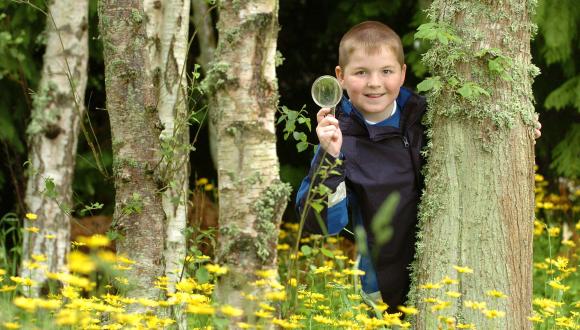Planning tools for learning in local greenspace
Information and links to our templates for site auditing and action planning.
Baseline assessment
It can be helpful to know your starting point regarding the use of local greenspace for learning. This may highlight strengths that could be built on, or give you a focus regarding gaps to fill. Are your pupils offered a progression of outdoor learning experiences in their school career? Are opportunities taken to learn outdoors as part of all curricular areas, at all stages?
Involve the pupils in helping you find out. They could:
- develop and carry out a survey of teachers on their current use of the school grounds and local area. Which greenspaces do staff already use, if any?;
- question teachers on how frequently they take learning outdoors and for which curriculum areas;
- ask staff what would help them get out more;
- help complete a SWOT analysis for using local greenspace (identify strengths, weaknesses, opportunities and threats);
- use our example questionnaire for staff (and use it with our template action plan).
Find out more
Creating your action plan
For learning in local greenspace to become truly embedded throughout the school you should include it in your School Improvement Plan.
When creating your action plan:
- use your baseline assessment and greenspace audit to inform your action plan. Build on your strengths and plan how you will overcome any barriers. Do you need to do anything at your space or en-route before you can begin using it with pupils?;
- a great start to planning pupil visits is to use the Teaching in Nature approach. If you don’t have a site manager or other person to share their knowledge about the space, just go yourselves as a group of colleagues; you will be amazed at the ideas that are generated when you simply spend some time there together;
- working with parents and the wider community is an extremely worthwhile investment and will help normalise learning in local greenspace;
- be ambitious but realistic. You are likely to encounter many barriers and issues along the way but also come across many opportunities you haven’t even thought of now. Build in frequent review dates in case you need to update your tasks and timescales in the light of these;
- do you want to link with other initiatives or award schemes, perhaps to reinvigorate something you already do?;
- don’t try to do everything at once. Is your initial aim to improve health and wellbeing; help pupils apply Maths in a real-life context; improve Literacy; increase physical activity; develop leadership skills; ease transition? Perhaps different teachers, year groups or subject teachers could focus on different things and then share with others;
- evaluation should be planned in from the start. Do you need to gather baseline information, e.g. on pupil attainment in a certain curricular area? Having information on raised attainment or improved behaviour, e.g. could help you convince colleagues that learning in local greenspace is worthwhile or even help secure funding;
- Get school leadership on board as early as you can. The National Improvement Framework recognises the quality and impact of leadership as one of the most important aspects of the success of any school;
- use our action plan template, which builds on our baseline questionnaire.
Find out more
Baseline assessment - Questionnaire to inform action plan
School improvement planning and learning in local greenspace
The National Improvement Framework and learning in local greenspace
Greenspace Audit
Visit your space with colleagues and/or partners to carry out a site audit and brainstorm potential learning opportunities and any issues that need resolved before visiting with pupils.
Consider:
- options to access or move around the site;
- challenges and opportunities offered by the site’s characteristics;
- the learning potential of the various features;
- how the site might change with the seasons and the opportunities this might bring;
- potential hazards and how these might be reduced to an acceptable level.
Find out more
Related Links
Risk-benefit assessment (Education Scotland National Improvement Hub)






